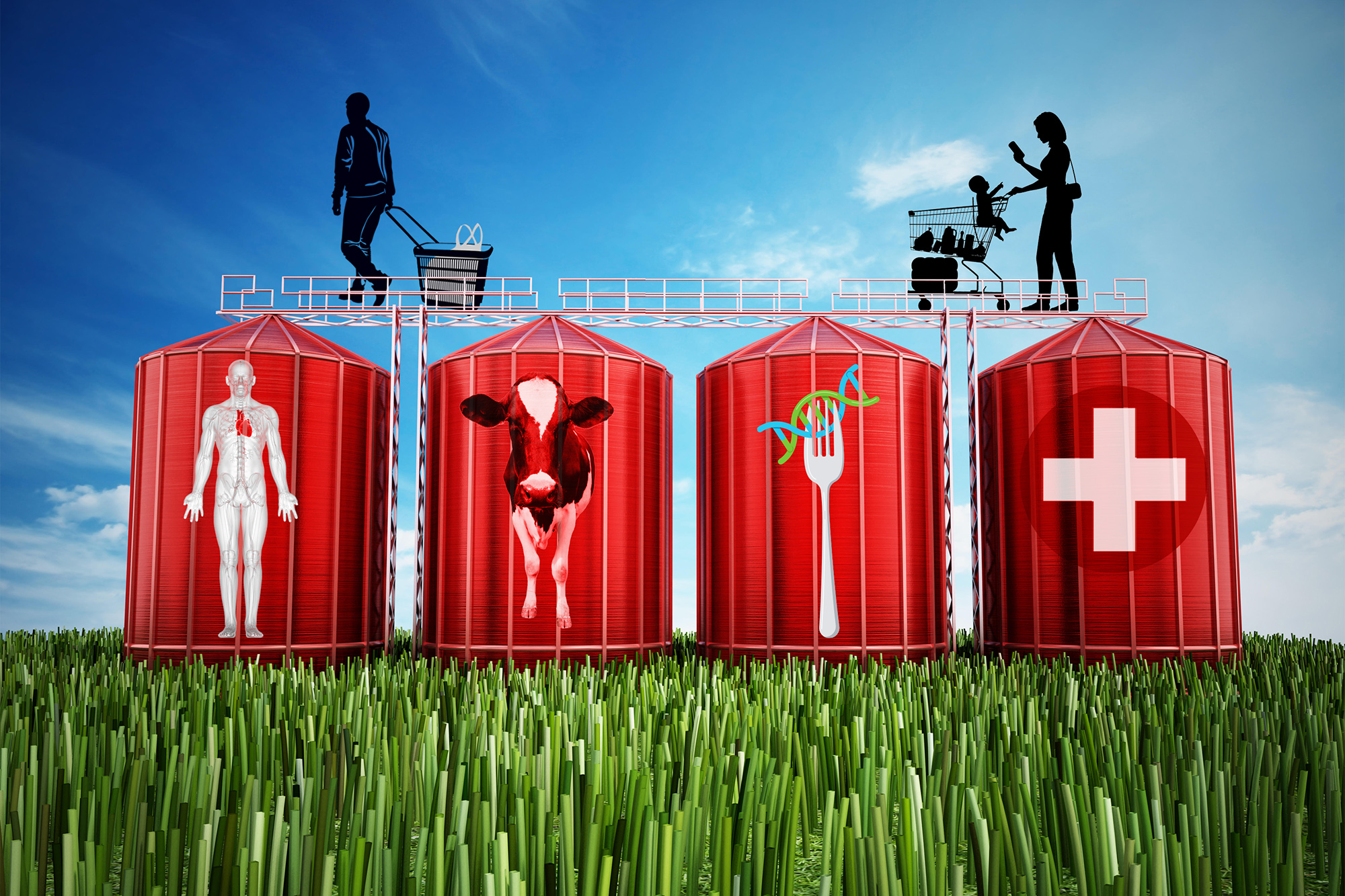
Is mad cow disease making a comeback?

Switzerland has already recorded two cases of atypical mad cow disease this year. Other countries like the United States, United Kingdom, Spain, Netherlands and Brazil have also been affected.
On March 13, the Swiss Federal Food Safety and Veterinary Office (FSVO) announced that an atypical form of mad cow disease or Bovine Spongiform Encephalopathy (BSE) had been detected in a 12-year-old cow designated for slaughter in canton Graubünden in the east of the country.
“The carcass was properly disposed of and incinerated, so the meat from the sick cow did not enter the food supply chain,” the FSVO stated in its press release.
Four months later, the government body announced another case of atypical mad cow disease in a 13-year-old cow in the neighbouring canton of St Gallen.
“There is no link between this case and the one in the canton of Graubünden in March,” stated the FSVO on July 13.
This article is part of our dedicated coverage of developments in the food industry from a consumer’s point of view. Despite its small size, Switzerland occupies a substantial place in the global food basket. It is home to food and agriculture giants like Nestlé and Syngenta, as well a major players in chocolate and dairy. The country is also positioning itself as a food tech hub with many startups and a dedicated incubator in the form of the Swiss Food and Nutrition Valley. The Alpine nation is also the European hub for many commodity firms dealing with food products like soy, cocoa, coffee and palm oil.
Switzerland was declared a country of negligible risk for BSE in 2015 by the World Organisation for Animal Health (WOAH). Since then, there have been only three recorded cases of atypical mad cow disease (besides the two cases this year, one case was recorded in February 2020).
“These are isolated cases that pose no risk to farmers or public health. These are atypical cases of BSE, meaning that they occur only rarely and sporadically in isolated animals,” the FSVO told SWI swissinfo.ch by email.
Classical vs atypical
BSE first made its appearance in the UK in 1986. The first case in Switzerland – also the first on the European continent – was reported in 1990. The crisis reached its peak in 1995 when nearly 70 cases were reported across the country. Meat sales dropped by about 10% because of lower demand for beef.
The crisis at the time was caused by what is known as classical mad cow disease. It can occur when livestock consume feed containing animal byproducts from infected animals in their first year of life. None of the Swiss animals affected recently had meat or bonemeal in their feed as this has been banned in Switzerland since 2001.
Atypical mad cow disease on the other hand, is a naturally and sporadically occurring form of BSE that is present in cattle populations at a very low rate. The cause is not known but it is generally identified in older animals (a case of an infected 22-year-old cow was reported in Spain this February). However, the US Department of Agriculture reported a five-year-old animal at a slaughter plant in South Carolina. The beef cow almost entered the slaughter chain.
According to the World Organisation for Animal Health (WOAH), mad cow disease “is a progressive, fatal disease of the nervous system of bovines that is caused by the accumulation of an abnormal protein called ‘prion’ in nervous tissue”.
The classical version has been linked to the emergence of Creutzfeldt-Jakob disease (vCJD) in humans that is also characterised by the accumulation of abnormal prions. Symptoms show up after around four months and may include impaired ability to walk, see and talk. Death is inevitable and is usually a result of infection such as pneumonia or lung failure.
As of 2019, it is estimated that 232 people have died from vCJD that was likely a result of eating cows with BSE. Most of those lived in the UK at some point in time where 4.4 million cows were slaughtered as part of their eradication programme.
According to the World Organisation for Animal Health (WOAH), there is no evidence so far that atypical mad cow disease is transmissible to consumers. However, the circulation of the infectious agent due to improper carcass disposal cannot be ruled out.
While Switzerland may be having a record year in term of cases, there is some good news at the global level.
“According to the official data reported by our Members to the World Animal Health Information System (WAHIS), cases of atypical BSE have not increased in recent years,” a spokesperson for the WOAH told SWI by email.
Precautions
Besides banning the feeding of animal protein to livestock, the FSVO has surveillance protocols in place to keep infected animals from reaching consumers’ plates. A vet is required to examine all slaughter animals on arrival at the abattoir to detect any suspicious behaviour (for example unsteady gait or difficulty getting up).
Samples are then taken from such animals after slaughter for testing, as well as from all animals classified as sick or slated for emergency slaughter. Other precautions include removal and incineration of risky parts such as brain and spinal cord from all cattle aged 12 months and over.
In the UK, whose beef exports were banned for ten years by the EU and 23 years by the US, mad cow disease is a notifiable animal disease. Anyone, including farmers, who suspect it must contact animal health officials. Failure to do so is an offence.
Countries can also take trade-related precautions to protect themselves. China, the world’s biggest importer of beef, has bilateral agreements in place with supplying countries. When Brazil confirmed a case of mad cow disease in February, it had to temporarily suspend beef exports to China based on sanitary protocols between both countries.
Trade was resumed only a month later after it was confirmed that the case was one of atypical mad cow disease. Agribusiness consultancy Datagro Pecuaria told the Reuters news agency that Brazilian beef industry lost between $20 million to $25 million per day during the trade suspension period.
More

In compliance with the JTI standards
More: SWI swissinfo.ch certified by the Journalism Trust Initiative































You can find an overview of ongoing debates with our journalists here . Please join us!
If you want to start a conversation about a topic raised in this article or want to report factual errors, email us at english@swissinfo.ch.